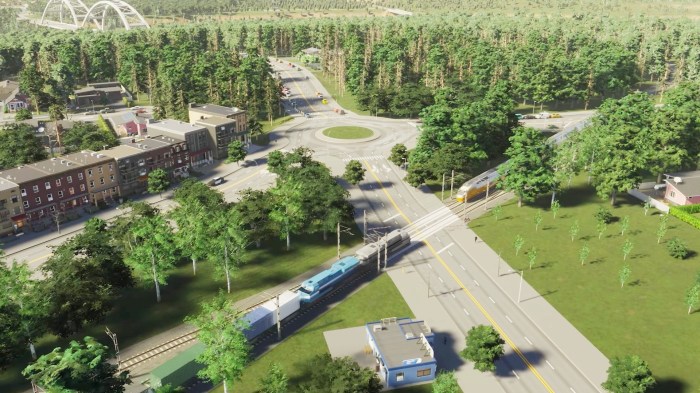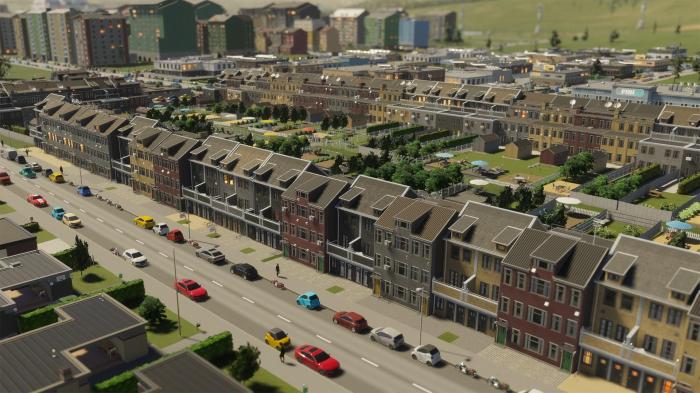Cities skylines 2 zoning – In the realm of city planning, zoning plays a pivotal role in shaping the urban landscape. Cities: Skylines 2 introduces a robust zoning system that empowers players to design and develop thriving metropolises. This comprehensive guide delves into the intricacies of zoning in Cities: Skylines 2, providing strategies and insights to help you create efficient, livable, and visually appealing cities.
Zoning in Cities: Skylines 2 offers a diverse range of zones, each with unique characteristics and functions. Residential zones accommodate housing for your citizens, while commercial zones foster economic growth through businesses and services. Industrial zones support manufacturing and resource extraction, and special zones allow for the development of parks, landmarks, and other amenities.
City Planning with Zoning: Cities Skylines 2 Zoning

Zoning is a tool used in city planning to regulate the use of land and development. It divides a city into different districts, each with its own set of rules and regulations. Zoning can be used to control the types of buildings that can be built in an area, the density of development, and the height of buildings.
There are many different types of zoning, including residential, commercial, industrial, and agricultural. Residential zoning is used for areas where people live, commercial zoning is used for areas where businesses are located, industrial zoning is used for areas where manufacturing and other industrial activities take place, and agricultural zoning is used for areas where farming and other agricultural activities take place.
Zoning can be a powerful tool for shaping the development of a city. It can be used to create more livable and sustainable cities, and to promote economic development.
Zoning in Cities: Skylines 2

Zoning works in a similar way in the Cities: Skylines 2 game. Players can use zoning to control the types of buildings that can be built in an area, the density of development, and the height of buildings.
There are many different types of zones available in Cities: Skylines 2, including residential, commercial, industrial, and office. Residential zones are used for areas where people live, commercial zones are used for areas where businesses are located, industrial zones are used for areas where manufacturing and other industrial activities take place, and office zones are used for areas where offices and other professional buildings are located.
The factors that affect zone development and growth in Cities: Skylines 2 include the availability of land, the demand for housing and businesses, and the level of education and income of the population.
Zoning Strategies for Effective City Building

There are many different strategies that players can use to create efficient and livable cities in Cities: Skylines 2. One common strategy is to use mixed-use zoning, which allows for a variety of different types of buildings to be built in the same area.
Another common strategy is to use transit-oriented development, which focuses on developing areas around public transportation hubs. This can help to reduce traffic congestion and make it easier for people to get around without a car.
There are many other zoning strategies that players can use to create effective and livable cities in Cities: Skylines 2. The best strategy will vary depending on the specific needs of the city.
Advanced Zoning Techniques, Cities skylines 2 zoning

In addition to the basic zoning tools, there are also a number of advanced zoning techniques that players can use in Cities: Skylines 2. These techniques include:
- Mixed-use zoning:This allows for a variety of different types of buildings to be built in the same area.
- Transit-oriented development:This focuses on developing areas around public transportation hubs.
- Density controls:These can be used to control the number of buildings that can be built in an area.
- Height restrictions:These can be used to control the height of buildings in an area.
- Setbacks:These can be used to control the distance between buildings.
These advanced zoning techniques can be used to create more complex and realistic cities in Cities: Skylines 2.
Popular Questions
What are the different types of zones in Cities: Skylines 2?
Cities: Skylines 2 offers four main types of zones: Residential, Commercial, Industrial, and Special.
How does zoning affect city development?
Zoning regulates the use of land, controlling the types of buildings and activities that can be developed in specific areas. This helps to shape the overall character and functionality of your city.
What are some strategies for effective zoning?
Effective zoning involves balancing different types of zones, considering factors such as accessibility, population density, and environmental impact. Mixed-use zoning and transit-oriented development are two advanced techniques that can enhance city livability.
